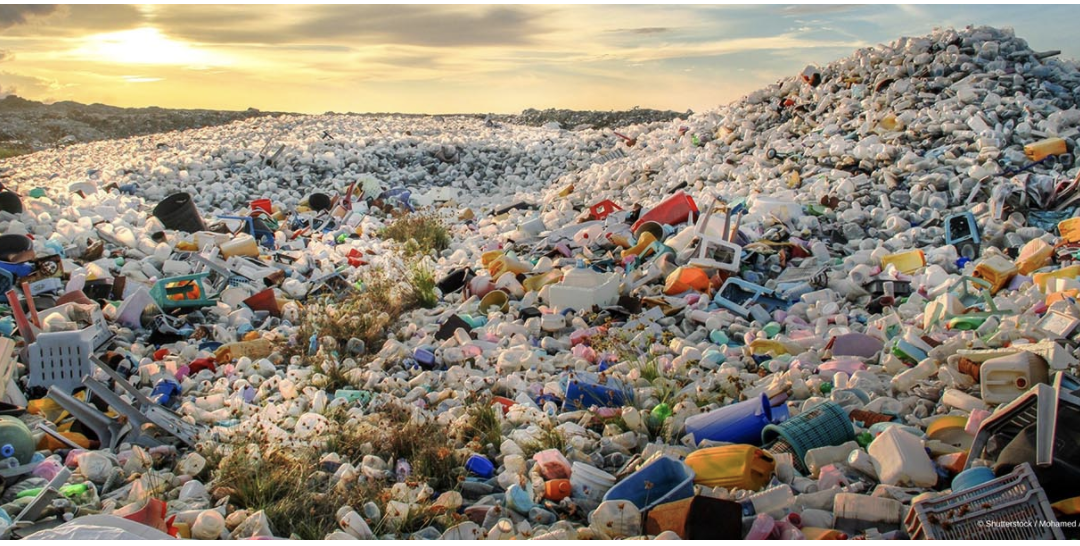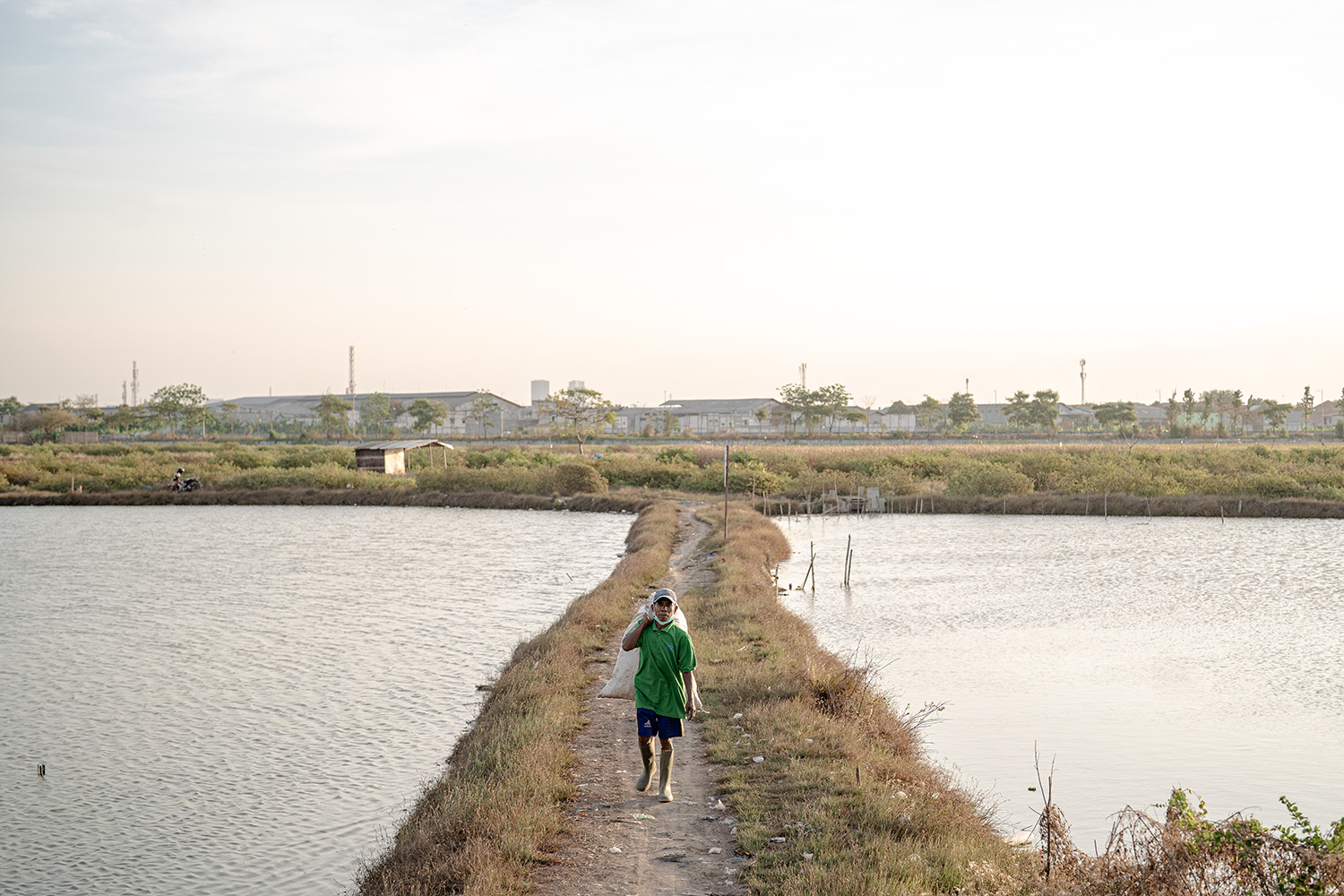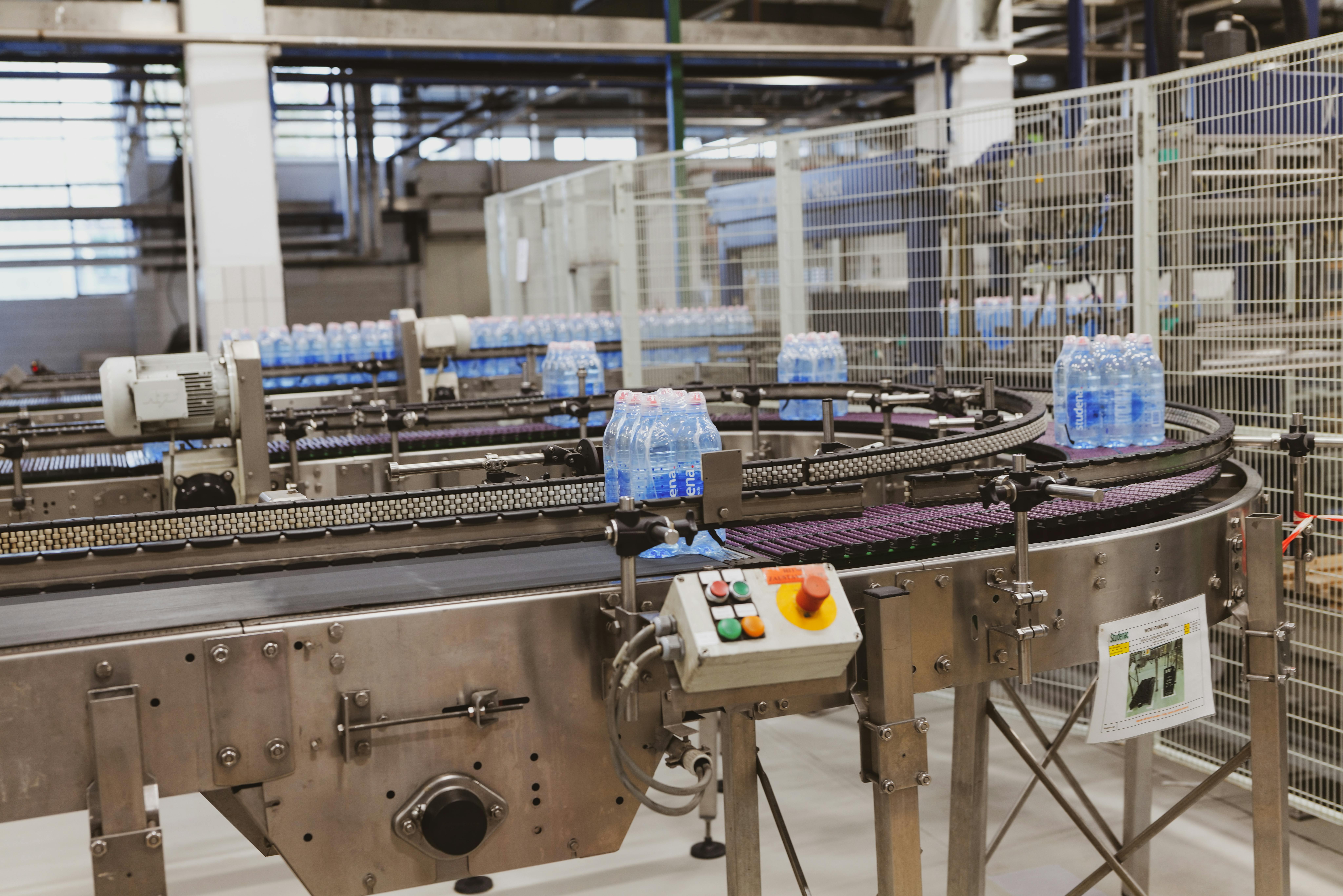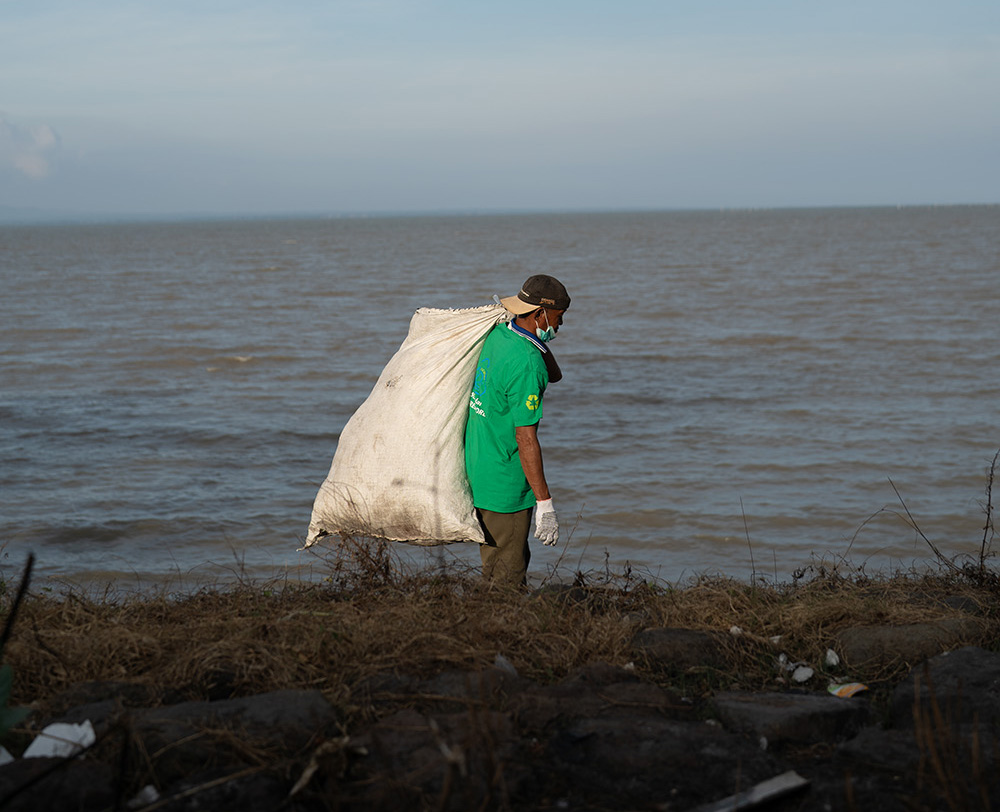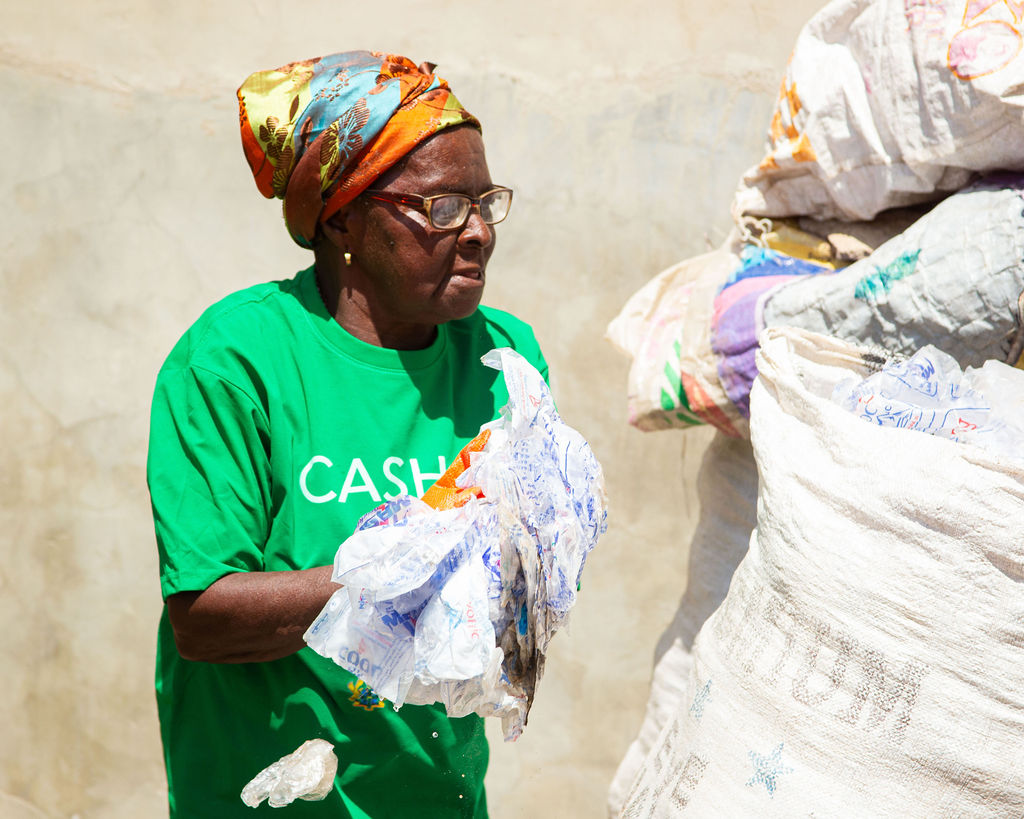Keeping up with the ever-growing green glossary
As a CSR professional or a responsible consumer, it’s difficult and even frustrating to keep up with the green glossary of sustainability jargon. In the plastic space, it is no different. We are bombarded by terms like: Plastic Neutral, Plastic Negative, Ocean Bound Plastic and, more recently, Plastic Net Zero. Underlying each term is a different calculation method. While brands are increasingly adopting Plastic Net Zero terminology, general understanding of the term has yet to catch up.
Plastic Net Zero defined
A Plastic Net Zero product is one that ensures that any plastic it leaks into the environment is removed. In this scenario the product is not adding to the amount of plastic pollution that already exists – it creates a net addition of zero. In other words, this is the rate at which new sources of plastic pollution stop thanks to community projects, like those at Plastic Collective, that collect, recycle and recirculate plastic into new products. Historical plastic pollution quantities are not addressed by Plastic Net Zero products. This is why Plastic Net Zero products, though important, are one tool in a diverse toolkit to address the plastic challenge.
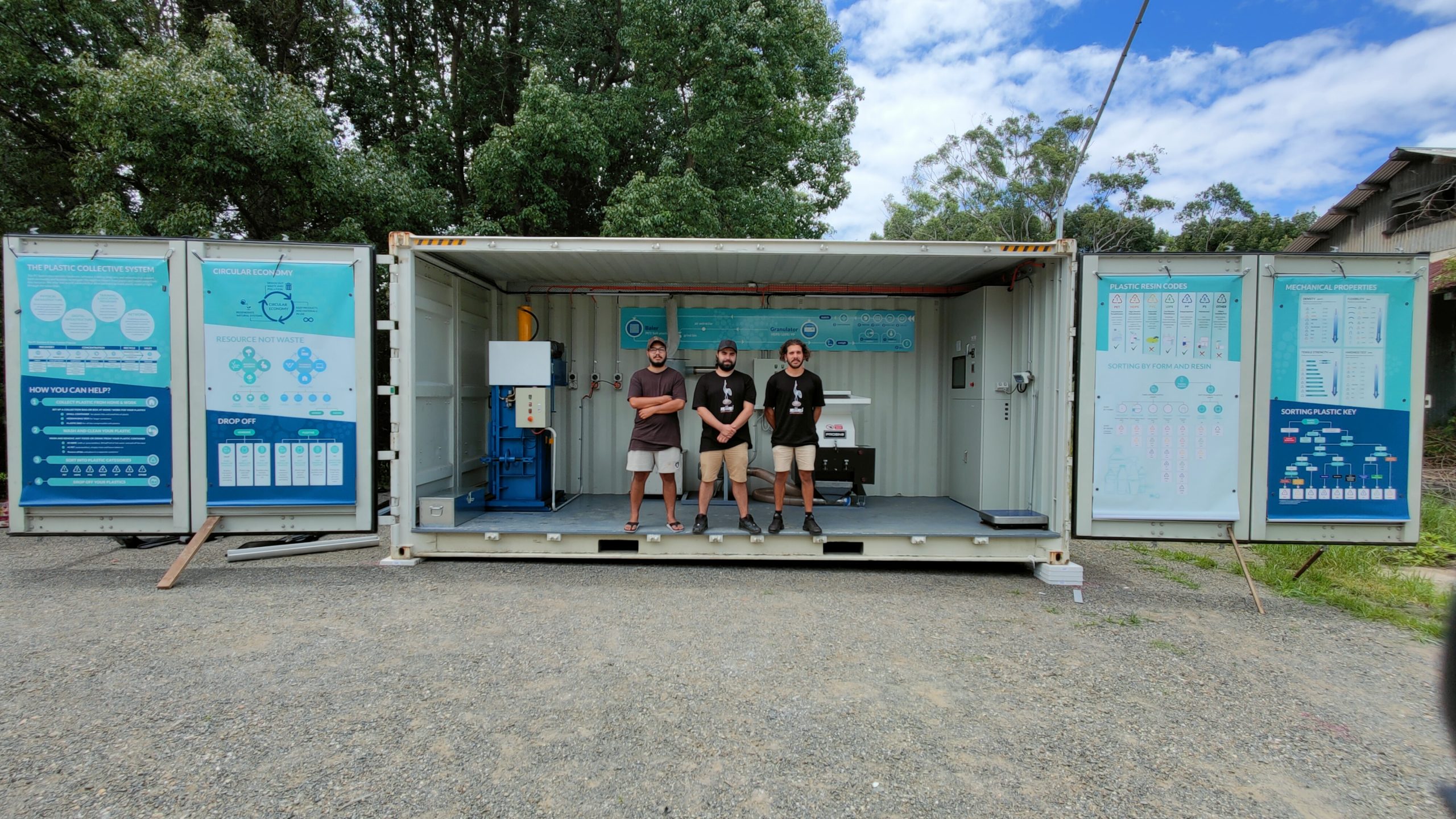
Figure 1. Plastic Collective established a mobile recycling station for a remote community in Bowraville, Australia in January 2022. The community, through brand partnerships, will collect and recycle plastic waste previously leaking into the environment. Much of this recycled material will be transformed into Net Zero Plastic products. Full story here.
Apply the Net Zero concept to daily life. Picture a professional wrestler who must maintain their 85 kg weight to compete (their historical plastic pollution weight). One night, they may get carried away and order beers, steak and an ice cream sundae (new plastic products), which add to their weight. To compete, they exercise to reach 85kg again – this is a net increase of zero.
Communicating Plastic Net Zero on a collection, recycling and circular level
Plastic is a tangible material which, unlike CO2 emissions or greenhouse gas emissions, must address Net Zero calculations at three levels to be considered Net Zero throughout its entire lifespan:
1. Net Zero Plastic Collected: Collect as much plastic as the product leaks into the environment each year.
2. Net Zero Plastic Recycled: Collect and recycle as much plastic as the product leaks into the environment each year.
3. Net Zero Plastic Circular: Collect, recycle and use as much recycled plastic as the product leaks into the environment each year.
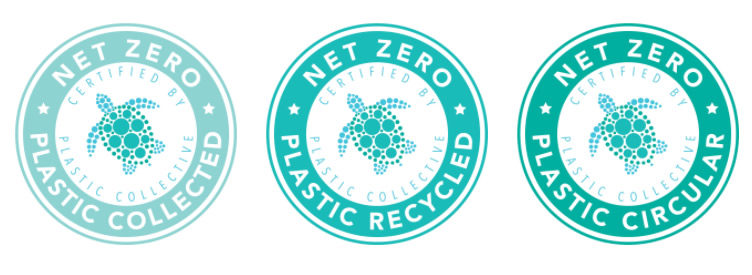
For those focused on the climate action from a carbon dioxide emission reductions angle, note that the Net Zero definition differs. The link between plastic and climate change, as we have previously blogged about at Plastic Collective, should not be overlooked, though. Afterall, 99% of plastics in use are composed of fossil fuels – a non-renewable energy source that releases methane and contributes to global warming.
Given the above three levels of nuance, brands should publicly specify which Net Zero level their product, or company as a whole, is targeting. While all brands as plastic emitters have a responsibility to society to address their plastic footprint, some brands are progressing towards their reduction targets faster than others. Such brands should be recognized for going the extra mile. This is why Plastic Collective offers brands three badges that, once certified, can be added to a product’s label (see Figure 2 above).
Standard best practices exist for communicating Plastic Net Zero targets as well as other commitments. The Guidelines for Corporate Plastic Stewardship (The Guidelines) summarize must-have metrics and how to transparently communicate plastic commitments and claims. Some top-level items to adopt include:
1. a SMART long-term target.
2. an interim SMART target to meet a longer-term target.
3. an immediate action plan that is realistic to achieve the interim target.
4. a longer-term action plan that is realistic to achieve the long-term target.
The Guidelines can also be easily merged with other frameworks, which allow brands to create holistic sustainability strategies. Most notably, the Sustainable Development Goals, drafted by the United Nations Framework Convention, and science-based targets.
Progress on the Plastic Net Zero target should be publicly reported annually, in alignment with the Verra Plastic Standard to ensure a brand’s credibility. For example, activities should be framed as either a within value chain activity, such as substituting virgin plastic with recycled (which lowers carbon emissions), or beyond value chain, such as plastic offsets. Within value chain activities should be prioritized over beyond value chain since these decisions are ones brands directly control. Over the long-term, this offers more positive environmental impact and moves the private sector more quickly towards meeting the Paris Agreement milestones.
Going beyond Plastic Net Zero
Many like to think of plastic pollution as a tap we can turn off once the world becomes conscious. However, even if we “turn off the tap”, there are still decades of plastic pollution damaging the environment. Brands must acknowledge this legacy and take action to address historical leakage. The longer this plastic sits in our oceans, soil and air without proper collection, the longer society will continue to be plagued by the perils of plastic. The Covid pandemic has only intensified the urgency for brands to set plastic targets that can truly move the needle over the next decade. So, while getting today’s plastic pollution levels and global emissions to zero is extremely important, brands should not overlook their legacy plastic pollution as part of a longer-term plan to regenerate our world.
